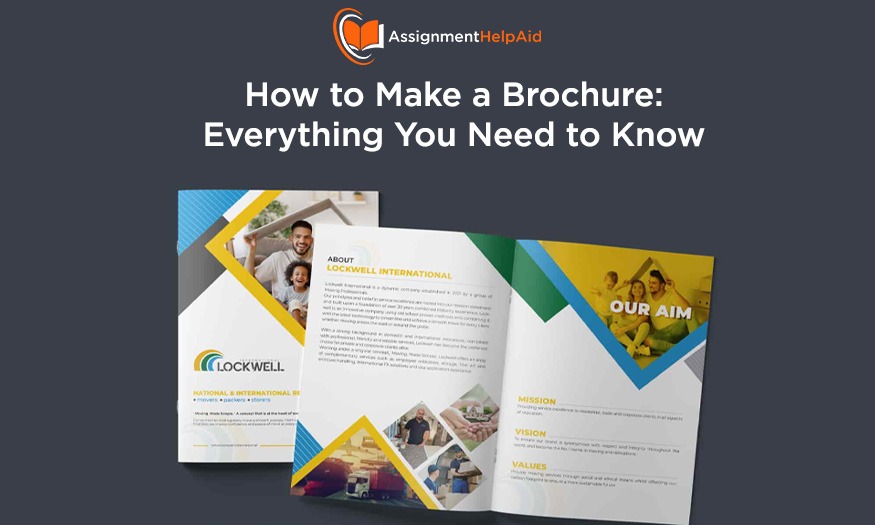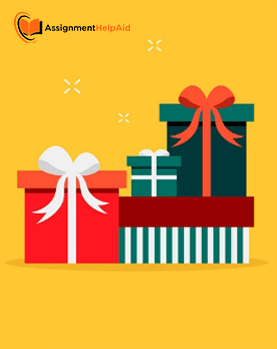
How to Make a Brochure: Everything You Need to Know
Creating a brochure can be a powerful way to promote your business, event, or cause. Whether you’re new to design or looking to refine your skills, this guide will walk you through the entire process of making an effective brochure. From planning and layout to choosing the right images and text, we’ll cover everything you need to know. By the end of this blog, you’ll have the knowledge and confidence to create a brochure that grabs attention and delivers your message. Let’s get started on turning your ideas into a polished and professional brochure.
How to Make a Brochure
Brochures are one of the most effective marketing tools available, making brochure writing an essential skill in the marketing curriculum. If you find yourself unsure about how to write a compelling brochure, this guide will provide you with the essential details to get started.
What is a Brochure?
A brochure is a key marketing tool used by companies to capture the attention of potential customers quickly. Traditionally, brochures are print publications designed to highlight the benefits, products, and services of a company. With advancements in technology, e-brochures have become increasingly popular, offering a digital alternative to their printed counterparts.
Historically, brochures have been printed on a single tri-fold sheet of thick, glossy paper and distributed manually. Despite the rise of digital media, the principles of creating an engaging and effective brochure remain the same.
Major Elements of a Brochure
Creating a brochure involves several key components. Understanding these elements will help you prepare a well-structured and persuasive brochure.
1. An Attractive Title
The title of your brochure is crucial as it is the first thing that potential readers will notice. An impressive title can significantly increase the likelihood of your brochure being read. As a marketing student, your goal should be to create titles that resonate with your audience and draw them in.
Examples of Effective Titles:
- Tapping into Emotions:
- Fear or Pain: “Couldn’t provide your wife with the diamond ring due to price? See our collection…” This title addresses a common pain point and offers a solution.
- Joy or Excitement: “Experience the thrill of adventure with our new travel packages.”
- Smart/Savvy Appeals:
- “The boring ones chose cars. The smart ones chose [Brand Name].” This title appeals to the reader’s desire to be seen as smart and discerning.
- Situational Appeals:
- “Imagine yourself on a sun-drenched beach in Sydney drinking the most exotic Abraham’s pina colada.” This title creates a vivid image and appeals to the reader’s desire for a luxurious experience.
- Against the Wave:
- “Think Small. Grab the deal to buy the smallest car in the world, Beetle.” This title goes against conventional wisdom and stands out by being counter-intuitive.
- Directly Stating Problems:
- “Less time to work on projects? Less time to write content? Less time to design or create?” These titles directly address common issues faced by the target audience.
2. Interesting Details
Including intriguing and relevant details about your service or product can significantly enhance the appeal of your brochure. Use specific claims and facts to capture your reader’s attention.
Examples:
- “Most visited tourist spot in Venice.”
- “Ranked 2nd favorite hotel for tourists in Prague.”
These details provide a sense of credibility and help build trust with your audience.
3. Testimonials
Adding testimonials from happy customers can greatly improve the credibility of your services. Real-life experiences and positive feedback from others can be very persuasive.
Example Testimonial:
“Oh! You won’t believe how they helped me. I had to attend the office the next day, and during a worker’s strike, they offered me a cab, booked my tickets, and ensured I reached Florida by morning. The best part was receiving a message from them: ‘Good morning. Enjoy your coffee,’ while I was at my office.”
Such testimonials highlight your company’s commitment to customer satisfaction and can reassure potential clients of the quality of your services.
4. A Call to Action (CTA)A Call to Action (CTA) is a critical component of any marketing material. It prompts the reader to take a specific action, such as signing up for a service, making a purchase, or subscribing to a newsletter. Including a strong CTA in your brochure can drive conversions and achieve your marketing goals.
Examples of CTAs:
- “Subscribe to our newsletter for the latest updates and offers.”
- “Call us today to book your free consultation.”
- “Visit our website to explore our new collection.”
A well-crafted CTA can effectively guide your readers toward taking the next step in engaging with your business.
Steps to Writing a Brochure
Now that you understand the essential elements of a brochure, let’s dive into the process of writing one.
Step 1: Define Your Purpose
Before you start writing, clearly define the purpose of your brochure. Are you promoting a new product, announcing an event, or providing information about your services? Understanding your objective will guide the content and structure of your brochure.
Step 2: Know Your Audience
Identify your target audience and tailor your message to their needs and interests. Consider factors such as age, gender, income level, and preferences. Knowing your audience will help you create content that resonates with them.
Step 3: Create a Strong Headline
Your headline should grab attention and encourage the reader to continue reading. Make it bold, concise, and relevant to the content of the brochure.
Step 4: Write the Body Content
The body of your brochure should provide detailed information about your product or service. Use clear and concise language, and organize the content into sections with subheadings for easy navigation. Include relevant facts, benefits, and features that will appeal to your audience.
Step 5: Use Visuals Wisely
While traditional brochures often include images, e-brochures can also utilize graphics, videos, and interactive elements. Ensure that any visuals you use are high quality and relevant to the content. They should complement the text and help convey your message more effectively.
Step 6: Include a CTA
As mentioned earlier, a strong CTA is essential. Make it clear what action you want the reader to take and make it easy for them to do so.
Step 7: Proofread and Edit
Review your brochure for any errors or inconsistencies. Check for spelling and grammar mistakes, and ensure that the content flows logically. It can be helpful to have someone else review your brochure as well to catch any issues you might have missed.
Conclusion: How to Make a Brochure
Brochures are a powerful marketing tool that can effectively promote your products or services. By understanding the key elements of a brochure and following a structured writing process, you can create compelling and persuasive brochures that capture the attention of your target audience and drive results. Remember to focus on creating an engaging title, including interesting details and testimonials, and incorporating a strong call to action. With these tips, you’ll be well on your way to mastering the art of brochure writing.
Need Help with Your Brochure? Get Expert Assistance from Assignmenthelpaid.comStruggling to finish your brochure on time? Get the help you need from the experts at Assignmenthelpaid.com. This top online academic service has been assisting students for over 10 years, helping thousands achieve their academic goals.
If you’re worried about meeting your brochure deadline, the specialists at Assignmenthelpaid.com are here to help. With a team of over 5000 academic experts, including marketing professionals, you can trust them to provide timely support. Here are some benefits of using Assignmenthelpaid.com:
- Error-Free Content: Receive perfectly drafted content without any mistakes.
- Affordable Prices: Get the best rates in the market, plus amazing discounts.
- Plagiarism-Free: Enjoy 100% original content.
- On-Time Delivery: Your work will be delivered promptly.
- Privacy Protection: Your data will remain completely private.
- Secure Payments: All transactions are safe and secure.
- 24/7 Support: Customer service is available around the clock.
- Free Revisions: If needed, get free reworks.
- Access to Samples: Explore thousands of free samples.
- Writing Resources: Browse a huge collection of blogs on academic writing.
Don’t wait any longer. Place your order now and get the MBA assignment help you need for any topic or task.

